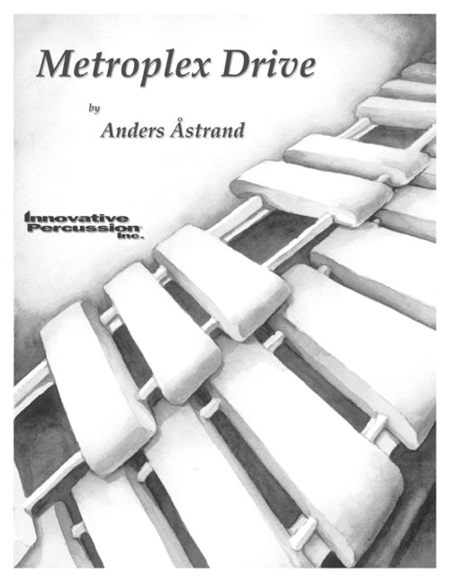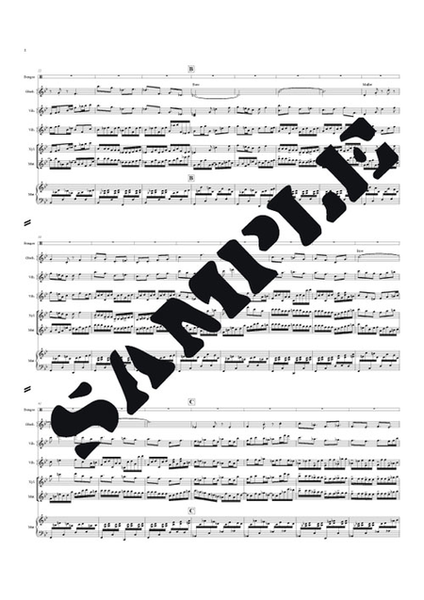Metroplex Drive
-
Ships in 4 to 6 weeks
Details
Description
SKU: IP.E-AA-MET
Composed by Anders Astrand. Score and set of parts. Innovative Percussion #E-AA-MET. Published by Innovative Percussion (IP.E-AA-MET).8.5x11 inches.
Composer's notes: Metroplex Drive was commissioned by Janis Potter for the All-Star Mallet Ensemble performance at the 2010 PASIC.
"Many of Anders Astrand's works encompass a laid-back groove, cascading accompaniment figures and graceful melodic lines. This piece is no exception. Written for Janis Potter's Marimba All-Star Concert at PASIC 2010, Astrand utilizes a small keyboard ensemble of two vibraphones, xylophone, two marimbas (4.3 and 5.0), and one percussionist on glockenspiel, crotales and bongos. The introduction is very slow with soft, openvoiced chord changes played underneath short solo statements by each player in the ensemble. After each "all-star" has his or her individual time to shine, the entire ensemble is ready to go. The piece begins with a relaxed 6/8 groove in the second marimba part leading to the full ensemble entrance. From this point, the piece remains at a steady tempo with clear four-bar phrases. Even though the vibraphone has the primary melody for a majority of the piece with the xylophone, while a second vibe part and the first marimba part contain counter-melodies and harmonic support, "Metroplex Drive," named after the street where Innovative Percussion is located, is not a vibraphone feature. Each player has an important role with short solo lines that emerge from the texture. Throughout the main body of the piece, the second marimbist continues the primary groove and bass line, while the crotale/glockenspiel doubles the melody and bows long chord tones. There are several transitions in this part where the player will need to make adjustments due to quick changes between the mallets and bows. After four 16-bar sections, the vibraphonist has chord changes for soloing, while the other players, including the bongos, lay down a gentle groove underneath. After a short transition with unison runs in all parts, the primary theme is repeated once, followed by another unison run to the end. Overall, ensemble members will need to wade through the thick texture to discover and bring out the important lines. Additionally, each individual part has technical challenges including large leaps and brisk arpeggios up and down the keyboard. In regards to the manuscript, there are very few dynamic markings, so care should be taken to study the score and add dynamics accordingly to emphasize the primary themes, solo interjections and phrase structures." - Brian Zator Percussive Notes, January 2011.


 Share
Share